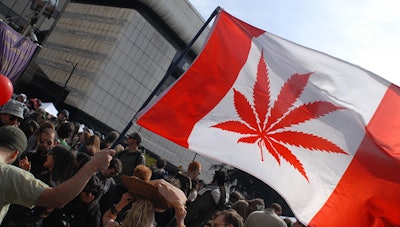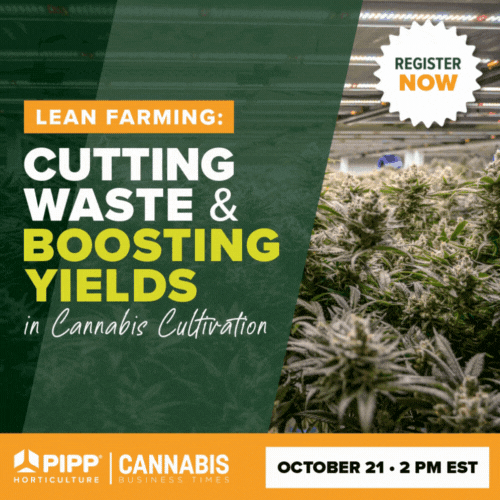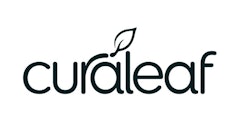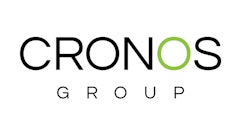
Canada’s Task Force on Cannabis Legalization and Regulation released its final report Dec. 13, providing recommendations to the country’s government on how marijuana legalization should be implemented.
The 106-page project is the culmination of six months of the group’s consultation with local, provincial and worldwide governments, as well as an online public consultation of more than 30,000 submissions from Canadian citizens.
Some general highlights include a recommendation to set the national legal age of purchase at 18 and to allow limited promotion, similar to Canada’s Tobacco Act. Label requirements for cannabis products include listing the amounts of tetrahydrocannabinol (THC) and cannabidiol (CBD), as well as text warnings such as “KEEP OUT OF REACH OF CHILDREN.”
The report suggests designing a tax scheme around THC potency, meant to discourage purchase of high-potency products. It also directs tax revenue from the program to be used for administration, research and enforcement, but also “prevention, education and treatment.”
The section “Establishing a Safe and Responsible Supply Chain” sets out recommendations regarding the commercial growth and production of cannabis, including:
• Regulate the production of cannabis and its derivatives (e.g., edibles, concentrates) at the federal level, drawing on the good production practices of the current “cannabis for medical purposes” system. (The report states that only “approved fertilizers and pesticides should be allowed.”)
• Use licensing and production controls to encourage a diverse, competitive market that also includes small producers. (The recommendation does not name a specific number of licenses, but states that the number should be “balanced against the possible miscalculation of demand that would create opportunities for illicit producers to fill the void.”)
• Implement a seed-to-sale tracking system to prevent diversion and enable product recalls.
• Promote environmental stewardship by implementing measures such as permitting outdoor production, with appropriate security measures. (The report specifies “less reliance on indoor lighting, [use of] irrigation networks and environmental controls” as examples, and that outdoor growing could reduce costs and create space for smaller “craft” producers.)
• Implement a fee structure to recover administrative costs (e.g., licensing).
• Regulate CBD and other compounds derived from hemp or from other sources.
Personal home cultivation invited some of the most intense feedback from online citizen responses, with 92 percent of those responses in favor. The report recommends allowing some home cultivation within limits, noting that other jurisdictions require lockable spaces for indoor production and securely fenced areas for outdoor production. The recommendations also include:
• Set clear limits on the scale of the cultivation permitted (maximum four plants per residence with a maximum height limit of 100 cm.
• Prohibit unlicensed sale. (The report notes that “some degree of sharing among friends and relatives is inevitable.”)
• Prohibit the manufacture of concentrates in homes using volatile solvents and chemicals.
• Establish guidelines to ensure cultivation is in spaces not visible or accessible to children.
• Provide oversight and approval by local authorities.
In terms of implementation of the new regulations, the focus of government funding should be on research and surveillance, according to the report. Lab testing, licensing and training (both of law enforcement and government inspectors) come next on the list.
“Designing and implementing a Canadian system is a unique undertaking,” says Anne McLellan, former minister of justice and chair of the task force, at a Dec. 13 press conference covered by Vice News. “We are the largest developed nation ever to move on legalization.”
The report’s recommendations remain only recommendations, though, and Prime Minister Justin Trudeau can use or ignore any part of the report in its implementation of a national adult-use marijuana program. The report can be found in full here.
The 106-page project is the culmination of six months of the group’s consultation with local, provincial and worldwide governments, as well as an online public consultation of more than 30,000 submissions from Canadian citizens.
Some general highlights include a recommendation to set the national legal age of purchase at 18 and to allow limited promotion, similar to Canada’s Tobacco Act. Label requirements for cannabis products include listing the amounts of tetrahydrocannabinol (THC) and cannabidiol (CBD), as well as text warnings such as “KEEP OUT OF REACH OF CHILDREN.”
The report suggests designing a tax scheme around THC potency, meant to discourage purchase of high-potency products. It also directs tax revenue from the program to be used for administration, research and enforcement, but also “prevention, education and treatment.”
The section “Establishing a Safe and Responsible Supply Chain” sets out recommendations regarding the commercial growth and production of cannabis, including:
• Regulate the production of cannabis and its derivatives (e.g., edibles, concentrates) at the federal level, drawing on the good production practices of the current “cannabis for medical purposes” system. (The report states that only “approved fertilizers and pesticides should be allowed.”)
• Use licensing and production controls to encourage a diverse, competitive market that also includes small producers. (The recommendation does not name a specific number of licenses, but states that the number should be “balanced against the possible miscalculation of demand that would create opportunities for illicit producers to fill the void.”)
• Implement a seed-to-sale tracking system to prevent diversion and enable product recalls.
• Promote environmental stewardship by implementing measures such as permitting outdoor production, with appropriate security measures. (The report specifies “less reliance on indoor lighting, [use of] irrigation networks and environmental controls” as examples, and that outdoor growing could reduce costs and create space for smaller “craft” producers.)
• Implement a fee structure to recover administrative costs (e.g., licensing).
• Regulate CBD and other compounds derived from hemp or from other sources.
Personal home cultivation invited some of the most intense feedback from online citizen responses, with 92 percent of those responses in favor. The report recommends allowing some home cultivation within limits, noting that other jurisdictions require lockable spaces for indoor production and securely fenced areas for outdoor production. The recommendations also include:
• Set clear limits on the scale of the cultivation permitted (maximum four plants per residence with a maximum height limit of 100 cm.
• Prohibit unlicensed sale. (The report notes that “some degree of sharing among friends and relatives is inevitable.”)
• Prohibit the manufacture of concentrates in homes using volatile solvents and chemicals.
• Establish guidelines to ensure cultivation is in spaces not visible or accessible to children.
• Provide oversight and approval by local authorities.
In terms of implementation of the new regulations, the focus of government funding should be on research and surveillance, according to the report. Lab testing, licensing and training (both of law enforcement and government inspectors) come next on the list.
“Designing and implementing a Canadian system is a unique undertaking,” says Anne McLellan, former minister of justice and chair of the task force, at a Dec. 13 press conference covered by Vice News. “We are the largest developed nation ever to move on legalization.”
The report’s recommendations remain only recommendations, though, and Prime Minister Justin Trudeau can use or ignore any part of the report in its implementation of a national adult-use marijuana program. The report can be found in full here.

























